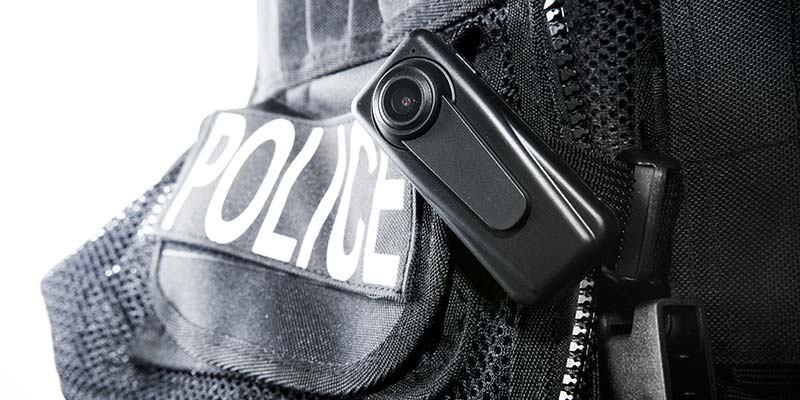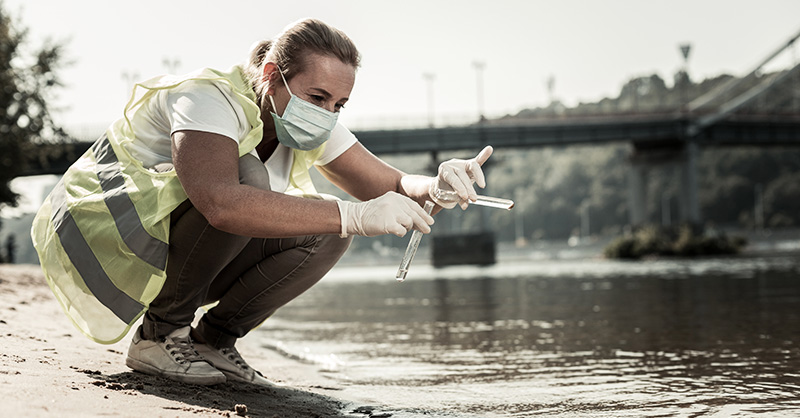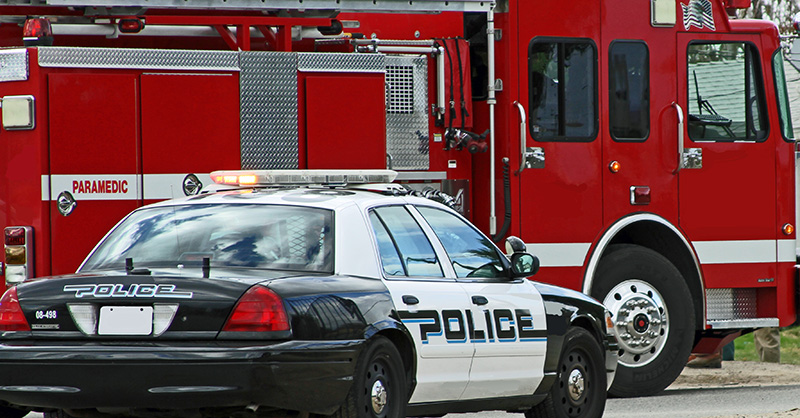Is Deploying a Body-Worn Camera Program a Good Decision?

The rapid development of technological solutions has become common in our society. In general terms, this can be regarded as a positive trend as we are provided several benefits from technological advancements.
Perhaps the question to ask is not whether the rapid development has positive benefits, but rather if the use of a specific type of technology is a good fit for your agency?
Currently, there is not enough historical research data available to fully understand if the use of body-worn cameras (BWCs) has a definite positive impact on law enforcement agencies across the country. This should change over time, but the available data is limited to only a few specific short-term research studies and offers only limited data.
If there is a lack of data that shows if the use of BWCs is beneficial, why would anyone consider using them? Furthermore, wouldn’t using BWCs present added liability for the agency using them? The answer is that a small amount of early research data shows some positive results from using BWCs.
Consider the following when deploying BWC systems.
How can law enforcement agencies benefit from body-worn camera programs?
Body-worn cameras are only one of the tools available to law enforcement for improving community trust, transparency and accountability. There are several benefits for law enforcement officers who wear BWCs:
- BWCs provide an additional layer of safety for the officer.
- Adoption of a BWC program can represent a law enforcement department’s effort to demonstrate transparency and accountability. In several studies, community member complaints against officers decreased following the adoption of BWCs (Katz et al., 2015; Ariel, Farrar, & Sutherland, 2014; Mesa Police Department, 2013). The results from these studies are supported by in-person interviews with 40 law enforcement executives conducted by the Police Executive Research Forum (PERF).
- In one study, use-of-force by law enforcement officers decreased following the adoption of BWCs (Ariel, Farrar, & Sutherland, 2014).
- Video from BWCs may assist with the prosecution of criminal cases or assist in the review of community members’ complaints against officers.
During the February 26-27, 2015 Bureau of Justice Assistance BWC Expert Panel, Inspector Steve Goodier of the Hampshire Constabulary in the United Kingdom shared highlights from their yearlong study of 180 body-worn videos. He cited reductions in crime, police-generated incidents and assaults against police officers. The inspector further explained “a large-scale public opinion survey was done before and after program implementation that concluded 85% of the public support for BWC technology. This survey was complemented by an officer survey–an overwhelming positive for support for BWCs.”
What are some of the concerns with a body-worn camera program?
The decision by a law enforcement agency to implement a body-worn camera program represents an enormous investment of time and resources. The following are some of the concerns related to BWC programs:
- Buying the hardware and managing the data: In January 2015, the acting chief of the Phoenix Police Department announced that it would cost the department $3.5 million to outfit its 3,000 officers with body cameras and manage the BWC program. Overall, the costs vary depending on the type of camera, type of storage, IT support, and the use of video. Agencies have been able to save money by joining with others to purchase cameras and storage.
- Privacy considerations: Privacy rights of the public are a primary concern. Different from a vehicle dash cam, BWCs have the potential to impinge on community members’ expectations of privacy. The technology may also present concerns for vulnerable populations such as children and victims of crime. Law enforcement agencies should fully investigate state privacy laws and engage relevant stakeholder groups (e.g., victim advocacy groups) before adopting BWCs. Officer privacy should also be addressed. Some law enforcement unions have opposed BWCs, arguing that adoption of the technology must be negotiated as part of the collective bargaining agreement. Also, at the February 26-27, 2015 Bureau of Justice Assistance BWC Expert Panel, some of the audience expressed concerns about BWCs because the technology allows supervisors to go on “fishing expeditions” against officers in their command. Discussions among law enforcement executives and line officers are an important aspect of the policy development for implementing a BWC program.
- Prosecution: Prosecutors and defense attorneys will want to review BWC videos related to their cases, but they too have an obligation to protect the privacy of community members captured in the videos. Therefore, it is important that the impact on prosecutorial and defense bar resources is considered when implementing a BWC program.
- Policy development: During the BWC Expert Panel, participants shared very specific concerns and examples about the BWC policy. For instance, Maggie Goodrich of the Los Angeles Police Department discussed her agency’s concerns about not wanting officers to put themselves in danger because of any additional distraction caused by the cameras. Deputy Chief Michael Kurtenbach of the Phoenix Police Department walked through an example of a video used in a prosecution that resulted in an assault conviction of the officer. Triggered by the egregious behavior in the video, the agency reviewed three months of prior video to help discover a pattern of inappropriate behavior. Upon the officer’s termination, the police union expressed concerns about the evaluation of prior video, because the department had said it would not use video for administrative purposes. Kurtenbach suggested that this illustrates the need for thoughtful consideration of policies even though, in this example, “once the videos were seen everyone agreed the officer should be fired.”
- Training considerations: Law enforcement agencies should plan for additional training on camera use, video review, and video expungement and redaction.
- Advocacy considerations: Cynthia Pappas from the Office of Juvenile Justice and Delinquency Prevention reminded BWC Expert Panel participants that “95% of youth and juveniles commit nonviolent offenses so there should be great precautions made to protect them, including protections from public screening” of the video. Krista Blakeney-Mitchell from the Office of Violence Against Women went on to describe how victim confidentiality should be addressed during a call for assistance for domestic violence. If an officer is entering the home of a domestic violence victim, the victim is exposed. “We need to consider how that plays out later in recordings. Will the video be used against the victim based on her demeanor near the time of the incident? Will she be re-victimized?” Another concern is the use of BWCs when dealing with sexual assault victims and the need to decide how a video will be used in these situations. Lastly, Blakeney-Mitchell explained that it is “hard for victims to come forward when everyone will know their story based on video footage…there is a concern that victim reporting will go down.”
What is the best way to implement a body-worn camera program?
Departments vary in how they have implemented body-worn camera programs. However, there are two common themes.
First, most departments have implemented their BWC programs with officers assigned to patrol. The rationale for deploying the technology with front-line patrol officers is that officers on patrol have the most contact with the public. Some departments have also expanded their use of BWCs beyond patrol into specialized units such as K-9, SWAT, specialized driving under the influence teams and investigations.
Second, many departments have adopted an incremental approach to deployment by restricting use to a small number of officers for an initial pilot period. Departments have found that this type of approach helps to overcome potential officer anxiety and resistance and enables a department to make mid-term revisions as it learns how this technology affects the community. Such a strategy also allows other units in the department time to adapt to the new technology. In many cases, the initial officers assigned to wear cameras are volunteers who often become "internal champions" for the technology.
What are the key policy areas law enforcement should consider before implementing a body-worn camera program?
A wide range of important issues may be governed by a law enforcement agency’s internal administrative policy. The PERF report identifies a range of key policy issues (PERF, 2014:37), including:
- Basic camera usage: Determine who will wear the cameras and where will the cameras be worn (hat, sunglasses, chest, etc.).
- Designated staff member: Identify who is responsible for maintaining, charging, reporting, documenting malfunctions and issuing new cameras.
- Recording protocols: Determine when to activate and deactivate the camera, and when recording is required, discretionary and prohibited.
- Video downloading process: Identify who will download, when the download will occur, where data will be stored, and how it will be safeguarded from tampering.
- Develop a method for documenting the chain of custody.
- Data retention periods: Establish data retention periods for different categories of recorded data (i.e., evidentiary, non-evidentiary).
- Process for accessing and reviewing data: Identify who is authorized to review and under what circumstances (e.g., individual officers, supervisors).
- Process for releasing recorded data to the public: This includes redaction processes, timelines for release, and data specifically prohibited from release.
- Process for contracting with third-party vendors: This should specifically focus on contracting for data storage.
Other resources for policy considerations include a report by the National Institute of Justice Sensor, Surveillance, and Biometric Technologies (SSBT) Center of Excellence (2012); the International Association of Chiefs of Police Body-Worn Cameras Model Policy; and the Office of Justice Programs Diagnostic Center Report (White, 2014).
Who should deliver training to law enforcement officers about the deployment of body-worn cameras?
The answer to this question is dependent on the size, structure and resources available to the agency. For some agencies, a training officer or training unit might be involved. In other agencies, training might include a commander, legal counsel, information technology specialist, or a combination of personnel. Regardless of the personnel assigned to train law enforcement officers on body-worn cameras, at least four fundamentals should be included in the training:
- Officers should be trained on departmental BWC policy (specifically when a BWC should be activated) and any applicable local/tribal ordinances or state laws.
- Officers should be trained to conduct a pre-shift inspection of the BWC to ensure that it is in proper operating condition.
- Officers should be trained on how and where to wear the BWC.
- Officers should be trained on properly documenting recorded events and downloading the evidence for storage according to departmental policy.
The PERF report concludes that "rigorous, ongoing officer training" regarding policy and protocols is essential for effective use of the technology. It may also be useful for an agency to create a training manual on BWCs and to make that manual available to officers. As the use of BWCs expands in an agency, training on the technology should be incorporated into the academy’s curriculum, so that recruits are exposed to the cameras during their formative training experience. The training may also be provided to other stakeholders, including judges and prosecutors. Some departments have selected an officer to serve as a liaison on BWC issues. The liaison meets periodically with line officers wearing cameras to create a feedback loop regarding training, policy, and the use of questions and concerns.
Some helpful considerations were shared by participants in the February 26-27 Bureau of Justice Assistance BWC Expert Panel. Specifically, Patricia Wolfhope, Senior Program Manager from the Science and Technology Directorate in the U.S. Department of Homeland Security, offered several considerations: "Training officers is highly dependent on what you want the outcome to be. When considering the technology, think about the use case first. How do you plan to use the video? Is it for evidence? Is it face recognition? Is it face detection? When officers start to see the payback of the cameras, then they buy-in and are more interested in the use of the technology. Technology is almost always ahead of privacy and policy issues.”
Conclusion
Deploying a body-worn camera program should always be done out of an abundance of planning. While we are not certain about the true value of BWCs, we do know that programs lacking adequate policies, training and management oversight are at greater risk of experiencing a negative event.
Information in this article was sourced from the Bureau of Justice Assistance in the United States Department of Justice. The Bureau created a BWC Toolkit, which offers a wealth of information and assistance with implementing a BWC program. You can find the toolkit here: Body-Worn Cameras (BWCs) | Overview | Bureau of Justice Assistance (ojp.gov)
For additional Loss Control guidance, please visit the Plan & Protect safety hub.









.jpg?sfvrsn=59fc2eb1_1)




